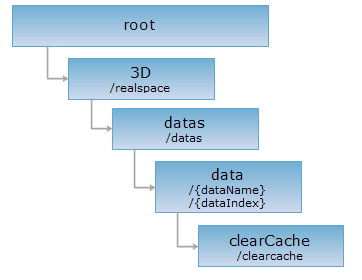URI
<data_uri>/clearcache[.<format>]
Supported methods
Parent resource
Introduction
The clearCache resource is an algorithm resource used to clear the 3D cache.
Supported methods
- GET: Clears the 3D cache.
- HEAD: Checks if the clearCache resource exists, or if there is permission to access the clearCache resource.
Supported output formats: rjson, json, jsonp, html, xml.
GIS Services Resource Hierarchy

HTTP request methods
Below is an example of performing an HTTP request on a specified URI with rjson as the output format. supermapiserver in the URI is the name of the server.
http://supermapiserver:8090/iserver/services/3D-sample/rest/realspace/datas/WorldMap/clearcache.rjson
GET Request
Clears the 3D cache.
Request parameters
| Field | Type | Definition |
| _cache | boolean | [Optional parameters] Whether to use cache, the default is True. False means close all the cache. |
Response structure
After a GET request is performed on the clearCache resource, 搕rue?or 揻alse?is returned as the representation indicating whether the 3D cache is successfully cleared (the representation is included in the entity body of the response message).
Example of response
Below is an example of performing a GET request on the clearCache resource with the parameters included in the URI:
http://supermapiserver:8090/iserver/services/3D-sample/rest/realspace/datas/WorldMap/clearcache.rjson
If clearing the 3D cache is successful, the returned representation of the operation result in rjson format is as follows:
true
HEAD Request
Asks for the response identical to the one that would correspond to a GET request, but without the response body. This is useful for retrieving meta-information written in response headers, without having to transport the entire content. The meta-information includes the media-type, content-encoding, transfer-encoding, content-length, etc.
HEAD request can be used to check if the clearCache resource exists, or if the resource can be accessed by clients. It can also determine if the clearCache resource supports an output format <format> if performed on a URI with .<format> included.